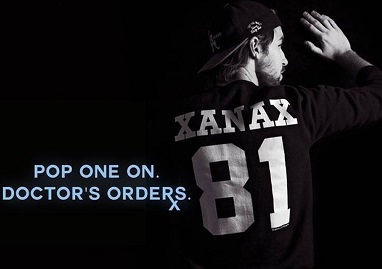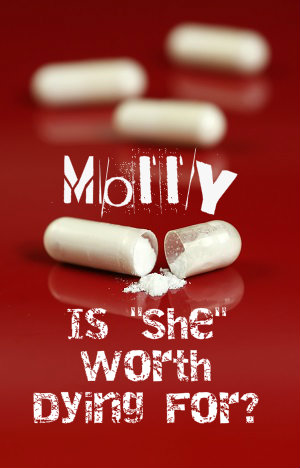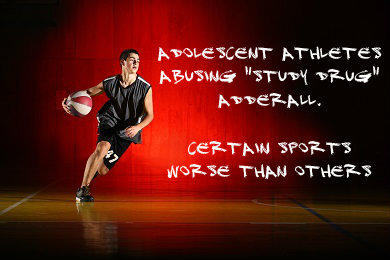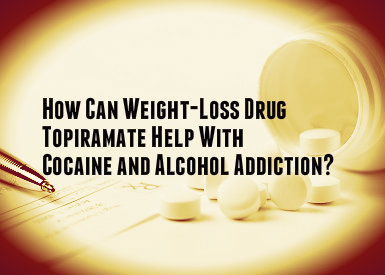Each year the Substance Abuse and Mental Health Services Administration (SAMHSA) conducts a National Survey on Drug Use and Health. The results of the 2012 survey have been published and coincide with the September observance of National Recovery Month.
For the most part, the report held good news showing how some worrying trends have begun to reverse. According to the 2012 study, abuse of alcohol, tobacco and even prescription drugs is on the decline.
It is helpful to compare SAMHSA studies over the past decade to get a picture of how substance use is trending among America’s youth. There was good news in terms of certain substances and no progress in either direction in terms of other substances. Here is some of what the 2012 SAMHSA report had to say:

SAMHSA Report On Prescription Drug Abuse
The news on prescription drug abuse was encouraging and showed just how effective increased awareness and minor behavioral changes can be. Just four years ago 6.4 percent of 18 to 25 year olds were abusing prescription medications each month. In 2012 that number had dropped to just 5.3 percent and figures were very similar in 2010 and 2011. Public awareness, tighter controls on medications and targeted treatments all contributed to the improved statistics in this area
Alcohol Use Trend From SAMHSA Report
The SAMHSA report also showed that rates of drinking, even heavy drinking and binge drinking, by 12 to 17 year olds were lower compared to the numbers of teens drinking in 2002 and 2009. In 2002 around 14.2 percent of teens drove while under the influence of alcohol but that figure dropped to 11.1 percent in 2011 and inched up only slightly to 11.2 percent in 2012.
SAMHSA On Tobacco Use
Tobacco use was another bright spot in the report. Just over 15 percent of teens less than 18 years old reported smoking tobacco in 2002 but that dropped precipitously to 8.6 percent in 2012.
Illegal Drug Use From SAMHSA Report
Use of illegal drugs has held pretty much steady in recent years, right at 9 percent. Marijuana has grown in popularity for nearly a decade. In 2007, 5.8 percent of teens reported using marijuana, but in 2012 that number rose to 7.3. There was a slight decline in the number of those reporting marijuana use between 2011 (7.9 percent) and 2012 (7.2 percent) but it remains the most widely used illicit drug among teens.
Rates of drug abuse and drug addiction fell from nine percent in 2002 to six percent in 2012 but there is still so much progress needing to be made. According to SAMHSA estimates, 23 million Americans needed substance abuse treatment in 2012, but only 2.5 million received specialized care. It is important to be energized by the recent successes and redouble efforts to see prevention and intervention programs become the norm.
To See More About Trends In Teen Substance Abuse – Click Here
For nearly a quarter century now the state of Indiana has been conducting a youth substance use survey. The data is used to direct prevention and intervention strategies and to gauge how well those efforts are working. The most recent annual survey of alcohol, tobacco and other drug use, the Indiana Youth Survey 2013, reflects current trends in teen behaviors and attitudes and shows that some interventions are proving successful.
 The survey questioned 117,554 teens from private and public schools attending grades six through senior in high school. The survey is conducted in conjunction with the Indiana Prevention Resource Center who makes resources available to schools and communities aimed at curbing teen substance abuse.
The survey questioned 117,554 teens from private and public schools attending grades six through senior in high school. The survey is conducted in conjunction with the Indiana Prevention Resource Center who makes resources available to schools and communities aimed at curbing teen substance abuse.
Use of marijuana by teens (12 to 17 years) hit an all-time high in the state between 2008 and 2011. The good news is that the most recent survey shows that marijuana use is now falling among teens there. However, while marijuana use is dropping, its use is still seen as too high, and synthetic marijuana use is an increasing concern.
Synthetic Marijuana Use Dangerously Increasing
Synthetic marijuana is just what it sounds like — a man-made substance that mimics marijuana. It is made by drying plant material and then spraying it with chemicals which mirror the effects of marijuana and THC. The plant material is then chopped and marketed in stores as incense, but kids roll it and smoke it just like natural marijuana. In fact, the survey shows that teens are not substituting fake marijuana for real marijuana but are using the two drugs simultaneously.
This year’s survey included new questions related to risk factors and protective factors that influence teen drug use. Questions pertaining to the health of relationships and attitudes reveal the degree of risk or protection teens are experiencing. The attitudes of parents and friends about drug use influences teens greatly, as do how well relationships at home, school and among peers are faring.
Prescription Drug Abuse
The survey found that prescription drug abuse increases with age. Less than two percent of sixth graders reported abusing prescription drugs, but more than 14 percent of seniors admitted using. The survey was specific in asking teens if they bought prescription drugs from friends or obtained them from family members. Since a major protective factor against prescription drug abuse is a teen’s perception of danger, the survey highlights the need for more information and better education strategies letting kids know just how dangerous misuse of prescription drugs can be.
Other news found in this year’s survey included success in lowering the numbers of teens who engage in gambling (online, lottery, slot machines etc.). Teen gambling rates have dropped in Indiana and the survey revealed that teen regret/remorse over gambling is increasing.
A retailer in California is selling shirts which appear to promote, celebrate or at least trivialize the problem of prescription drug abuse. Kitson stores are marketing t-shirts that resemble football jerseys, but instead of a player’s name on the back they bear the names of the prescription drugs most often abused by American teens.
Xanax, Adderall and Vicodin are among the drugs features on these high-priced fashions, which may be crossing the line of responsible advertising say experts.

Courtesy of: www.venusbuzz.com
Kitson had pledged to donate a portion of the profits from shirt sales to the Medicine Abuse Project which is part of Drugfree.org. However, a statement from Drugfree.org said that not only have they not received any money, they “would not entertain any direct donation from Kitson while they flagrantly, and without remorse, continue to sell these products.”
Style’s Poor Taste
The shirts are marketed on their website with the gimmick line, “Pop one on and you’ll feel better. Doctors orders.” The clothing’s designer has stated that his intent is to start an important dialog between people on the subject of prescription drug abuse. Drugfree.org isn’t buying it and encouraged readers to share their opinions with Kitson on that company’s Facebook page.
It didn’t take long for the Kitson page to fill with negative comments pillorying the company for mocking such a serious problem and hoping to profit from it as well. But it wasn’t only a concerned citizenry who is crying foul here. The makers of these drugs are also taking the company to task.
Prescription Drug Maker’s Disapproval
Representatives from the makers of Xanax (Pfizer) and Adderall (Reps Shire) made public statements challenging Kitson’s right to make use of drug trademarks. Both companies denounced glorifying prescription drug abuse and separated themselves from marketing such apparel to youth. In addition, both companies threatened legal action if the clothing line is not shut down. Makers of Vicodin have not made public statements, but it is rumored that they too will pursue legal action against Kitson.
Whether or not Kitson ever donates a penny to Drugfree.org remains to be seen, but it is actually besides the point. The real question is whether there are any safe boundaries when it comes to fashionable drug promotion. We already know there are none in terms of drug abuse.
Parents may now find more reason to monitor their teen’s use of social networking sites: Teens that see social networking pictures of their buddies partying with alcohol and tobacco are much more likely to use those substances.
 The study was conducted by a team from the University of Southern California (USC) Keck School of Medicine that questioned 1,563 sophomore students from a Los Angeles high school on two separate occasions — once in October 2010 and then again in April 2011. Researchers asked the teens about friendships they had online through social media and also about their face-to-face friendships. They asked teens how often they utilized social networking sites and which ones they tended to use. They also asked teens about whether or not they themselves ever smoked tobacco or drank alcohol.
The study was conducted by a team from the University of Southern California (USC) Keck School of Medicine that questioned 1,563 sophomore students from a Los Angeles high school on two separate occasions — once in October 2010 and then again in April 2011. Researchers asked the teens about friendships they had online through social media and also about their face-to-face friendships. They asked teens how often they utilized social networking sites and which ones they tended to use. They also asked teens about whether or not they themselves ever smoked tobacco or drank alcohol.
The USC study, which was published in the Journal of Adolescent Health, is among the first to carefully investigate the way social networking behavior affects the use of alcohol and tobacco among teens.
High School Study Participants
The student participants were equally divided between girls and boys and the average age was 15. The study population generally reflected the racial make-up of the high school with one quarter of participants being Asian and two-thirds Hispanic. Right around 50 percent of the students involved in the study said they were regular visitors to social networking sites like Facebook or MySpace.
Around 30 percent of the high school students questioned said they had smoked cigarettes and above 50 percent of them said they had tried alcohol. One-third of the students said that they had a minimum of one friend who either smoked cigarettes or drank alcohol. The baseline was important in gauging how much viewing other students’ behavior might be considered as influencing their own.
When questioned, 20 percent of the students said that they had friends who posted pictures online of smoking, drinking and partying. Another 34 percent of the students said that they had at least one friend who mentioned partying (especially drinking or smoking tobacco) in their online discussions or postings. Between October 2010 and April 2011 the student use of Facebook increased by 75 percent and use of MySpace rose by 13 percent.
Results On Teens From Alcohol Posting On Social Networks
After analyzing the data, researchers found that teens are definitely influenced by online photos of their friends’ behavior, saying it didn’t seem to matter whether a teen had many or fewer friends in their network. What did seem to matter was what kind of pictures were posted by those friends.
Even if a teen did not have close, face-to-face friendships with kids who drank or smoked, they were nevertheless at risk for being affected by more exposure to pictures of those behaviors posted online. In other words, peer pressure and peer influence definitely extends into cyberspace.
The research backed up prior findings that show a difference between users of Facebook and MySpace. Teens that were only on Facebook tended to speak more English, come from higher social strata and get better grades. They also tended to not be Hispanic and were less likely to have ever tried smoking or drinking. Users of MySpace primarily tended to drink more, and the more they used MySpace the more they tended to drink.
Since 95 percent of American teens (ages 12 to 17) are online and 80 percent stay connected through sites like Facebook, these findings are extremely relevant. It isn’t only who kids hang out with at home or on the soccer field — it matters who teens connect with online. When kids are online there are any number of friends that parents may never meet in person.
24 Sep 2013
Do Teens Know the Truth About Molly?
Who is Molly? Molly is the new name for the decades-old drug ecstasy, the drug that was responsible for three deaths and four people being hospitalized in critical condition over this past Labor Day weekend.
Description Of Molly
Molly is a synthetic, or man-made, drug. It first showed up on the streets in the 1980s as ecstasy. At the time it was called a club drug because young people enjoyed taking it when they went dancing, attended concerts or large parties. Today it’s sold in powder form, usually in capsule form but also sold as pills or tablets, with “Molly” connoting molecular purity.
 The pills are brightly colored and sometimes emblazoned with cartoonish images. Officially the drug is known as MDMA, which stands for 3,4-Methylenedioxymethamphetamine. If you saw a few words in there you thought you recognized like amphetamine and meth you were right. The drug is a stimulant, or amphetamine, resembling methamphetamine in the way it increases heart rate and stimulation while providing feelings of euphoria.
The pills are brightly colored and sometimes emblazoned with cartoonish images. Officially the drug is known as MDMA, which stands for 3,4-Methylenedioxymethamphetamine. If you saw a few words in there you thought you recognized like amphetamine and meth you were right. The drug is a stimulant, or amphetamine, resembling methamphetamine in the way it increases heart rate and stimulation while providing feelings of euphoria.
MDMA is a concoction combining a stimulant with an empathy-boosting chemical plus a psychedelic. Kids like to take Molly at large group events because the drug makes them feel more energized, less inhibited and closer to those around them. There’s also a sensation of heightened alertness.
Molly’s Risks
There’s also a down-side as it can lead to blurry vision, racing blood pressure and heartbeat and muscle cramps. Sometimes the person’s insides are so revved up that they develop hyperthermia. Long hours of dancing and pressing up against people in a crowd make heat stroke likely. Increased heart rate can easily become an arrhythmia or erratic heartbeat, and seizures have also been known to occur.
MDMA may ratchet up energy and perception but it often pulls down the user’s emotions, leaving them feeling depressed, sad and anxious. Problems with memory can result and these difficulties sometimes last up to a week or more. When a young person decides to mix MDMA with alcohol they increase the sedative effects as well as increasing their risk of becoming dehydrated.
The risk of dehydration with use of MDMA is real, so lots of users try to compensate by drinking more water. However, since it causes the body to retain fluids, the combination of MDMA and water can quickly create an imbalance of electrolytes. Kids who choose to combine Molly with caffeine increase their risk of dehydration while also dangerously increasing body temperature.
Impure MDMA
Called Molly because of supposed molecular purity, the drug is no more pure than any other illicit drug. In fact, MDMA is often cut or completely replaced with another substance known as PMA which produces similar effects. Some deaths attributed to MDMA have actually been caused by PMA. More than that, street drugs are made with no regulating oversight, meaning every batch is unique and users can’t expect one tablet to affect them precisely the same as the last. Many high profile deaths come about because a celebrity is using street drugs in a new city and expecting them to be exactly like those they used in another city — it just doesn’t happen that way.
Celebrity Push Of Molly
Ecstasy, MDMA, Molly — whatever you call it, the drug is enjoying renewed popularity spurred on by pop singers like Madonna, Kanye West and Miley Cyrus. The Monitoring the Future studies conducted by the National Institute on Drug Addiction report that MDMA is experiencing a resurgence among 20-somethings and even high schoolers.
Strong Opportunity For Parents And Teachers
The recent tragic deaths at the Electronic Music Festival in New York provide an opportunity for parents and teachers to talk with teens about the realities of using drugs like MDMA. No matter what pop singers or friends might say, no experience is worth dying for.
The misuse of prescription drugs has become a serious problem in the United States. In many situations a prescription is written for a legitimate health problem, it’s used for a time and then left forgotten in a medicine cabinet.
Teens raid their parents’ and other relatives’ medicine cabinets to pilfer prescription drugs and the drugs are taken to parties where they’re mixed in combination with various other drugs. This practice can be dangerous, even deadly.
 While pain medications are a common choice, another drug readily available is Adderall, which is prescribed for attention deficit hyperactivity disorder (ADHD). This stimulant can allow students to focus and avoid sleep for days in an effort to work on a task or study. However, there are dangerous side effects, including heart palpitations and painful urination.
While pain medications are a common choice, another drug readily available is Adderall, which is prescribed for attention deficit hyperactivity disorder (ADHD). This stimulant can allow students to focus and avoid sleep for days in an effort to work on a task or study. However, there are dangerous side effects, including heart palpitations and painful urination.
The Study
Along with improved academic performance, Adderall can also improve athletic performance. A recent study published in the Journal of Studies on Alcohol and Drugs provides an analysis of Adderall use among adolescent athletes.
The researchers accessed data from the Monitoring the Future survey that gathered information from 8th and 10th graders in 2010 and 2011. The survey included 21,137 teens and measured the past-year non-medical use of the drug and used logistic regression analysis to determine if there was a connection between the level of involvement in competitive sports and nonmedical Adderall use.
The results showed that Adderall use was more pervasive in certain sports and there were differences between the genders. Males that played lacrosse and males that wrestled were more likely to use the drug, while females did not show any patterns of use based on particular sports.
The Findings
The study’s findings showed that certain sports, particularly those involving a high level of contact, may lead to pressure among males to improve performance through a stimulant like Adderall.
How Parent’s Can Help
Parents may not realize the stress that their children deal with as they compete for grades and placement on sports teams. In many cases, the teen may feel that parental expectations are adding to their stress, so a parents’ reassurance may help them avoid the danger of drug use.
Parents can help their children avoid the misuse of Adderall and other prescription drugs by talking regularly about the pressures of school and extracurricular activities, including sports. They can also work to maintain some level of contact with teachers and coaches to help ensure that their teen is exhibiting healthy behaviors related to school, sports and extracurricular activities.
Click Here – To Read More About Teen Substance Abuse
20 Sep 2013
Understanding Opioid-Related Disorders
Opioid-related disorders is the collective name of a group of substance-related disorders listed in the Diagnostic and Statistical Manual of Mental Disorders, a reference guide commonly used by mental health professionals across America. All of the conditions with this name involve negative consequences associated with the use of a wide variety of opioid narcotic medications or drugs. DSM 5, the 2013 edition of the Diagnostic and Statistical Manual, makes several changes to the definitions of the opioid-related disorders. Some of these changes involve a mere change in wording, while others involve a significant change in meaning.
Opioid-Related Disorder Basics
The five opioid-related disorders listed in DSM 5 are opioid use disorder, opioid intoxication, opioid withdrawal, “other” opioid-induced disorders and “unspecified” opioid-related disorder. Opioid use disorder is a new condition created by blending the definitions for two other conditions, called opioid abuse and opioid dependence, which appeared in the “Diagnostic and Statistical Manual’s” obsolete fourth edition (DSM IV). Opioid intoxication and opioid withdrawal keep the same definitions they had in DSM IV. The “other” opioid-induced disorders heading is a substitute for five separate DSM IV conditions. “Unspecified” opioid-related disorder acts as a substitute for a loosely defined DSM IV disorder called opioid-related disorder not otherwise specified (NOS).

Opioid Use Disorder
Opioid drugs and medications are well known for their ability to trigger substance abuse in users, as well as substance dependence (a medical term for addiction). People affected by substance abuse don’t meet the criteria for diagnosing a physical/mental addiction, but still participate in ongoing substance-based behaviors that strongly impact their lives in negative ways. People affected by substance dependence do meet the criteria for diagnosing an addiction; like substance abusers, they also participate in clearly harmful substance-based behaviors on a regular basis.
Issues of substance abuse and substance dependence overlap to a considerable degree. In fact, from a scientific standpoint, it’s perfectly reasonable to view dependence as a particularly damaging form of abuse. DSM IV kept the diagnosis of substance abuse and substance dependence strictly separated. However, DSM 5 discards the separate listings contained in DSM IV and establishes a replacement condition—called substance use disorder—which joins the symptoms of substance abuse with the symptoms of substance dependence. In accordance with this change, opioid users with significant abuse- or dependence-related problems will now receive a single diagnosis for opioid use disorder.
Opioid Intoxication
People in the midst of opioid intoxication develop at least two symptoms that alter their normal mental function, change their behavior for the worse, or otherwise impede their ability to carry out their typical routines. In all cases, one of the symptoms present must be unusual narrowing or widening of the pupils. Other qualifying symptoms include an inability to pronounce words properly, unusual sleepiness, a decline in normal memory function, a decline in the ability to voluntarily focus attention, and the onset of the dire state of unresponsiveness known as a coma. Additional requirements for a diagnosis include verifiable use of an opioid drug or medication in the very recent past and lack of other psychological or physical issues that could produce the problems attributed to opioid use.
Opioid Withdrawal
Opioid withdrawal occurs when an opioid user who has grown accustomed to the effects of a drug or medication suddenly stops using that drug or medication, or steeply decreases use over a short span of time. The Diagnostic and Statistical Manual provides doctors with guidelines to gauge the seriousness of withdrawal in any given patient. People going through grade 0 opioid withdrawal typically develop symptoms such as anxiety, a strong desire to continue drug/medication use, and the presence of behaviors designed to fulfill that desire. People going through grade 1 withdrawal develop symptoms such as unusual sweat output, uncontrollable yawning and unusual tear or mucus production. Symptoms associated with grade 2 opioid withdrawal include twitching muscles, restricted eating patterns similar to those found in people with anorexia, and pupil dilation. Grade 3 opioid withdrawal symptoms include sleeplessness, cramping abdominal muscles, muscle weakness, diarrhea, vomiting, and abnormal increases in blood pressure, heart rate and breathing rate.
“Other” And “Unspecified” Disorders
The “other” opioid-induced disorders diagnosis is designed to describe the presence of any mental disorder-related symptoms that appear as a consequence of opioid use. It replaces five separate diagnoses contained in DSM IV, including opioid-induced mood disorder, opioid-induced sleep disorder, opioid-induced sexual dysfunction, opioid-induced psychotic disorder with delusions, and opioid-induced psychotic disorder with hallucinations. The “unspecified” opioid-related disorder diagnosis lets mental health professionals identify cases of opioid-related mental health problems that don’t meet the minimum requirements for diagnosing any other opioid-related disorder.
A recent study published in the journal Drug and Alcohol Dependence reports that the drug topiramate may help people battling cocaine addiction. More specifically, the study showed that people suffering from both cocaine and alcohol dependence may be more successful in treatment and use less cocaine if they are prescribed topiramate. These findings largely agree with previous, separate studies that also show topiramate’s potential usefulness for treating cocaine and alcohol addictions. However, this most recent study is the first to look at the drug’s effectiveness for people dealing with both dependencies at the same time.
What Is Topiramate?
Topiramate is an anticonvulsant drug that was discovered in 1979. It was approved by the Food and Drug Administration (FDA) in 1996 and has been primarily used to manage seizures in patients with epilepsy. Topiramate has also been frequently prescribed to prevent migraine headaches. In 2012, the FDA also approved topiramate for use as a weight-loss drug in combination with the drug phentermine.
 One of the effects of topiramate is an increase in the amount of gamma-Aminobutyric Acid, or GABA, in the brain. This substance is a neuro-inhibitor, and researchers now hope that using topiramate to increase GABA levels may help limit the dopamine release that happens when people take cocaine or drink alcohol. This would reduce the euphoric feelings that result from these substances, and make it easier for people to resist cravings and fight addiction.
One of the effects of topiramate is an increase in the amount of gamma-Aminobutyric Acid, or GABA, in the brain. This substance is a neuro-inhibitor, and researchers now hope that using topiramate to increase GABA levels may help limit the dopamine release that happens when people take cocaine or drink alcohol. This would reduce the euphoric feelings that result from these substances, and make it easier for people to resist cravings and fight addiction.
Details Of The New Study
Researchers in the psychiatry department of the Perelman School of Medicine at the University of Pennsylvania created and published the new topiramate study. These researchers were assisted by the Charles O’Brien Center for Addiction Treatment.
The study took place over 13 weeks, with the participation of 170 people who experienced both cocaine and alcohol dependence. The majority of the participants in the study were African-American males, and participants had an average age of 45.
Some of the patients were treated with topiramate, while others were given a placebo. The study employed a double-blind set-up, in which neither the patients nor the researchers knew who was taking the drug versus the placebo. This allowed researchers to examine the true effectiveness of the drug at reducing cravings, reducing overall consumption of cocaine and alcohol, and helping patients stay in treatment.
Mixed Results
At the conclusion of the study, researchers found both positive and neutral results for the effectiveness of topiramate. Patients who received the drug were more likely to remain in treatment and less likely to use cocaine during the last three weeks of the trial than those who received the placebo. Twenty percent of the participants on topiramate were able go without cocaine during the study, compared to only 7 percent of the participants on the placebo. Patients who had the worst withdrawal symptoms in the past seemed to benefit the most from topiramate.
However, the drug was not better than the placebo at reducing cocaine cravings. In addition, the drug did not help patients reduce their drinking even though they generally reported reduced alcohol cravings.
These results were somewhat surprising, since past studies have shown that topiramate did help people with alcohol dependence. The researchers in the Perelman School of Medicine have speculated that these poor results may reflect the low number of heavy drinkers who participated in the study. In past studies, the average number of days of heavy drinking among the study participants was much higher. It may be that topiramate is more effective for people who are very heavy drinkers.
What Is Next For Topiramate?
Although topiramate studies have been promising, additional research is needed to determine whether the drug can be a useful long-term tool for fighting cocaine and alcohol dependence. Researchers plan to perform more studies in order find out whether topiramate is effective when paired with additional drugs. By combining different drugs that have shown moderate success, researchers hope to produce even more impressive results for a greater percentage of patients.
Ultimately, larger scale studies will be necessary before the FDA can approve topiramate for additional treatment purposes.
Click Here – To Read More About Other Surprising Medications That Help Cocaine Addiction.


